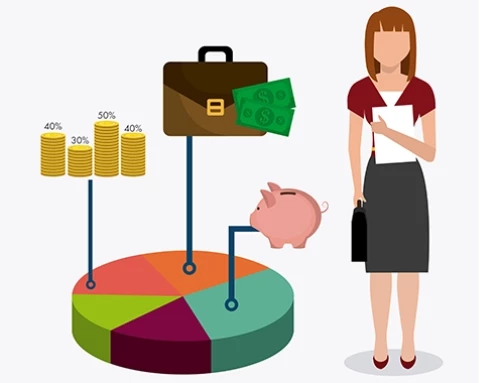Contents
Before the Internet was the Internet we know, companies would rely on sales-copy they sent people in the mail. Obviously, some still do (just ask your mailbox), but the times have changed and so have the rules. What has not changed, however, is the power of direct, personalized marketing and communication in driving sales. That’s why email marketing continues to be one of the critical areas that all businesses need to pay attention to. So, how do you ensure you’ll get the results you want with this? One way is to use the email marketing best practices that can improve the conversion rates of any business.
But which email marketing best practices should you consider implementing? Are some more important than others? There is definitely no shortage of articles and lists with different tips and tricks for email marketing. To clear things up, I’ve compiled this list of the most essential email marketing best practices for small businesses to clear things up. Before making our way to the list, however, I want to take a moment to briefly go over some definitions. Even if you already know the basics of email marketing, this may be a good time for a refresher.
What is Email Marketing?
Basically, email marketing refers to marketing efforts that use email as their primary tool. That’s more than a bit vague, however. A better definition should mention how it’s a type of direct marketing where you go to your potential buyers instead of the other way around. Email marketing is also one of the more effective methods you’ll have to drive sales and get better conversion rates. Correctly implemented, this type of marketing can increase engagement, generate leads, improve your sales funnel, and retain customers. What it will do for your business, and how successful it will be, depends on you. Using the right tools and following the vital best practices here can turn email marketing into a competitive edge for your business, no matter how small it is.
Email Marketing Best Practices for Small Businesses
Below, you’ll find some of the most critical guidelines that can put your email marketing on the right track. I have already devoted another article to tips and tricks you should consider in writing and designing marketing emails . The email marketing best practices here, however, are more fundamental, helping you improve your general strategy and get better results both in the short- and the long run.
Ensuring Email Deliverability
Email deliverability is a fancy and difficult word with a simple meaning. It refers to how many of your emails end up in your recipient’s inbox. Naturally, deliverability is a vital metric, and it will have a dramatic impact on your open rates. But how do you make sure your emails are more likely to be delivered to people’s inboxes than their Spam/Bulk folders?
ISPs and email service providers like Gmail use increasingly complex algorithms to classify emails. So, you’ll need to work on your email design to make sure it doesn’t get lost or seen as spam. There are different measures you can go about it. On the one hand, you need to prove to ISPs and services like Gmail that your email server is trustworthy. Email authentication, for example, is a must. You can also get an allocated IP address for your email server. Of course, if you use a SaaS CRM and email marketing tool like RunSensible, you won’t have to worry about getting a server with a dedicated IP address — you can use ours!
Setting up Lead Magnets
This best practice isn’t about sending emails but growing your email list. Email marketing relies on lead generation to turn casual visitors into recipients who have willingly signed up to receive your newsletters. But how many would just casually hand in their email address and ask for ads? Exactly. That’s where lead magnets come in. A lead magnet is something of value, like an ebook or a course, that you offer visitors for free. They have to fill out a form and sign up for your newsletter in exchange. The form usually asks for nothing more than their name and email address. Of course, you can try to get more details to help you get a better understanding of your buyer persona — but make the form too long, and people will just get discouraged and leave.
The best types of lead magnets provide visitors with actual value. An ebook with comprehensive knowledge on a relevant issue is a perfect example. Of course, it can also be a well-written whitepaper or even a free email course. You can refer to your own experiences with lead magnets and gated content to get the necessary inspiration.
Choosing an Email Frequency
Nobody likes those hard-sell, annoying businesses that seem to send another email every time you turn your head. Then again, being too laid-back and sending an email only once a month will also tank your marketing. Too many and too close together will make customers hate you, maybe even report your emails as spam. Too few and far between, and people will have forgotten who you are and why they’re getting emails from your company.
Getting the email frequency just right can be a bit tricky. Your business niche and how long the recipient’s been part of your email nurture list can give you a rough idea of the timing. For leads who have just signed up, for example, even a daily email schedule doesn’t come across as too much. Users are fired up the most when they’ve just started looking for something, and you want to turn that to your advantage. When they move to the middle of your sales funnel, however, you need to think about quality much more than quantity. For prospects already familiar with your business and weighing your products or services, a content-rich email with free resources like research papers outweighs a bunch of short, low-value emails.
The most fire-proof way of ensuring the right email frequency is setting up something called an email preference center. A preference center is like a settings panel on your website. People can use the preference center to decide how frequently they wish to receive a newsletter from you. You can direct leads here right after they’ve signed up, or you can provide a link in the emails you send them, so they can change their preferences any time they want. You can also place an option that lets them unsubscribe. While that may seem contradictory (you want more people on your list, not less!), it makes sense. You don’t want to stretch your time and resources on anybody who definitely doesn’t want your product. They can always come back if they change their mind.
Sending Transactional Emails vs Marketing Emails
There is an interesting fact about the emails you’ll be sending to your leads. It turns out that people distinguish between marketing emails on the one hand and transactional emails on the other. The emails users receive after they complete a task or somehow engage with your website are called transactional emails. For example, when a lead signs up for your newsletter, you send them a welcome email — which is considered transactional. Data suggests that people are 150% more likely to open transactional emails than ones they receive for marketing.
While the open rates for promotional emails are usually between 15-20%, transactional ones achieve a rate of 50-60%. This is a considerable leap that can be turned to your advantage. How? It’s simple — when sending a welcome email or a purchase confirmation one (or any other kind), make sure that it also contains some marketing material. Don’t be afraid to include a couple of promotional pieces or links to content on your website. With the right design, they won’t feel forced to fit beside the announcement you’re making.
Including the Right Content
Not all of your leads are interested in the same thing. They will need different content depending on their pain points and how far they are along the sales funnel. That’s why you can’t have just one email list. Instead, every business has several email nurture lists, each for a different buyer persona and funnel stage. New email subscribers, for example, will react better to lighter content like interesting blog posts, videos, or lists. That type of content will not get the same reaction from prospects toward the middle of the marketing funnel. They are more interested in detailed, data-rich content that will help them decide what to buy. If you’re interested, you can read more on the type of content relevant at each funnel stage .
The challenge here is to keep track of who needs what and which of the content you have ready meets the criteria. That actually brings us to the next point.
Using Email Marketing Tools
Crafting personalized, relevant content for your subscribers based on various personas and funnel stages is not exactly easy. Finding the necessary time can be a challenge when you are running a small business with just a handful of employees. Still, if you want to get better results, you shouldn’t abandon the effort to provide the right content to subscribers. How do you put these two conflicting facts together? The answer is using so-called email marketing tools. These applications let you define different recipient groups with unique content needs and frequency preferences. An excellent email marketing tool like RunSensible will also help you design the emails you’ll send and automate the entire process to make sure nothing is missed. RunSensible also includes a series of email templates that can make writing transactional and marketing emails much more manageable.
Adding a Marketing Funnel
Email marketing is an ideal method for encouraging people to move closer to making a purchase. But if sending emails is all the marketing structure you have in place, you won’t see much of a difference in your conversion rates. To get results, you need to integrate your email marketing into a sales funnel (also called a marketing funnel). A sales funnel is a marketing strategy that helps you better understand your customers and how close they are to purchasing your products or services.
Lead generation and email marketing best practices will yield their best results only when you use them as part of a complete sales funnel. The funnel, for example, can begin with a lead magnet, move the lead into an email nurture program, then incentivize them to visit the website or schedule a meeting with special offers, deals, or trails. This way, the whole funnel will act as a single mechanism. It will move the potential buyer from a visitor to a paying (and returning) customer.
How to Choose the Right Email Marketing Tool for your Business
Think your business is too small to use email marketing tools and CRM systems? It’s not. RunSensible is specially designed for small businesses needing an affordable CRM and marketing tool to get the job done without being too expensive.
What is an email marketing campaign?
It’s a set of emails with a common theme or a single goal, which marketers usually send close together. You can have many email campaigns as part of your email marketing strategy.
What is the best time to send marketing emails?
The frequency of sending marketing emails can change dramatically depending on the lead’s place along the sales funnel. An excellent idea is to set up a preference center to let users decide for themselves.
How do I get more people on my email list?
The best way to do that is by using lead magnets. Placing valuable content or other material on your website can generate leads as visitors provide their email addresses to get free access to it.
Disclaimer: The content provided on this blog is for informational purposes only and does not constitute legal, financial, or professional advice.






